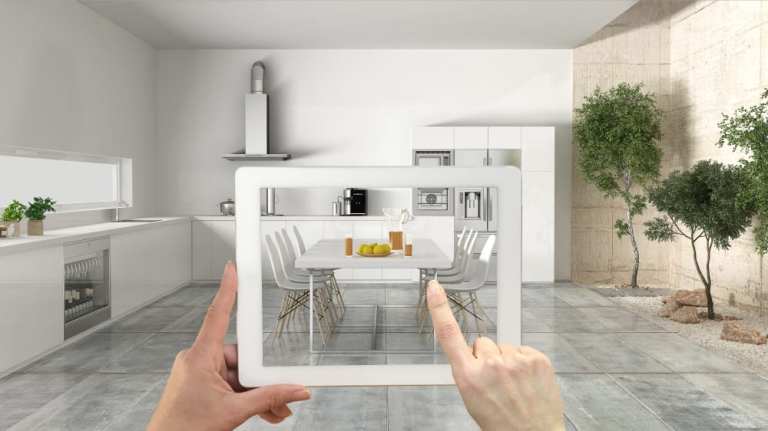How Furniture Fuels AR And Other Retail Innovations

Everyone needs furniture and home furnishings, and that need is helping to drive innovation in that sector of the retail economy.
Among the latest examples is a PYMNTS interview with Beck Besecker, CEO and co-founder of Marxent, a company that sells 3D commerce technology. Marxent is finding itself in increasing demand among sellers of furniture and home goods, and that makes Besecker a good tour guide for this growing area of commerce. He told a story of technology moving from “cool-thing” status to an increasingly expected part of the shopping experience (without losing its cool). “When AR came out, it was neat and novel and different,” Besecker said. “It was the first new mobile experience we’d had in many years.”
Indeed, augmented reality (AR) and other visual technologies can be seen as a progression from the earlier days of eCommerce, from all those photos, images and videos placed on retail websites. The goal was – and is – not only to simulate and bolster the physical shopping experience, but to provide confidence-building tools for consumers considering purchases.
Touch and Senses
Touch, of course, remains one of the most important senses when it comes to shopping. Consider the buying process for a car. “When the salesman gets you in the leather seat, you are more likely to buy,” Besecker said. But visuals also do heavy lifting for merchants, especially when the technology, say, enables a consumer to see what a room would look like with new furniture or other objects, or with a different design. Imagination certainly is important, but there are few substitutes for getting a real-deal glimpse of how one’s purchases might fit into existing spaces.
And nowhere is this more applicable than in selling large, expensive goods like furniture. So-called 3D product spins are the set standard, enabling potential buyers to see the item, customized as they want it, to get a visual handle on what they are buying to display in their living room.
It’s still early days for AR, virtual reality (VR) and 3D product visualization, but evidence is mounting that the technology does indeed lead to more sales and larger average order values, at least according to Besecker. For instance, if a room view is offered on a merchant product page, that tool gets used at least 50 percent of the time. As well, consumers who use that tool tend to have a 60 percent to 70 percent increase in shopping cart additions than other consumers. And for pages or products that include AR features, consumers spend four times longer on them than what would normally be the case, Besecker noted.
Uber of Furniture?
That’s not all. There is a move toward creating what would amount to an Uber of furniture.
That is the story of Oliver Space. Its pitch is to provide furniture and design help to people who are moving, but don’t want to drag along old sofas or chairs, aren’t attracted to the IKEA assemble-it-yourself approach – they don’t want to spend any time with screwdrivers, hammers and other tools – or who simply want a new household look without having to spend too much time shopping for furniture.
The idea behind Oliver Space is pretty simple, and would seem to fit within the larger world of subscription commerce and the sharing economy – categories that include Uber, Rent the Runway and various other operations. The company functions as a direct-to-consumer (D2C) operator, having relationships with furniture manufacturers (and a few retailers). For monthly fees, it provides furniture to users, who tend to be young urban professionals. That’s not all, though. Oliver Space also offers, via live chat (available some 14 hours a day) and video conferences, tips and advice about crafting a good look for one’s apartment or other dwelling.
You can expect these innovations to continue into the new decade.